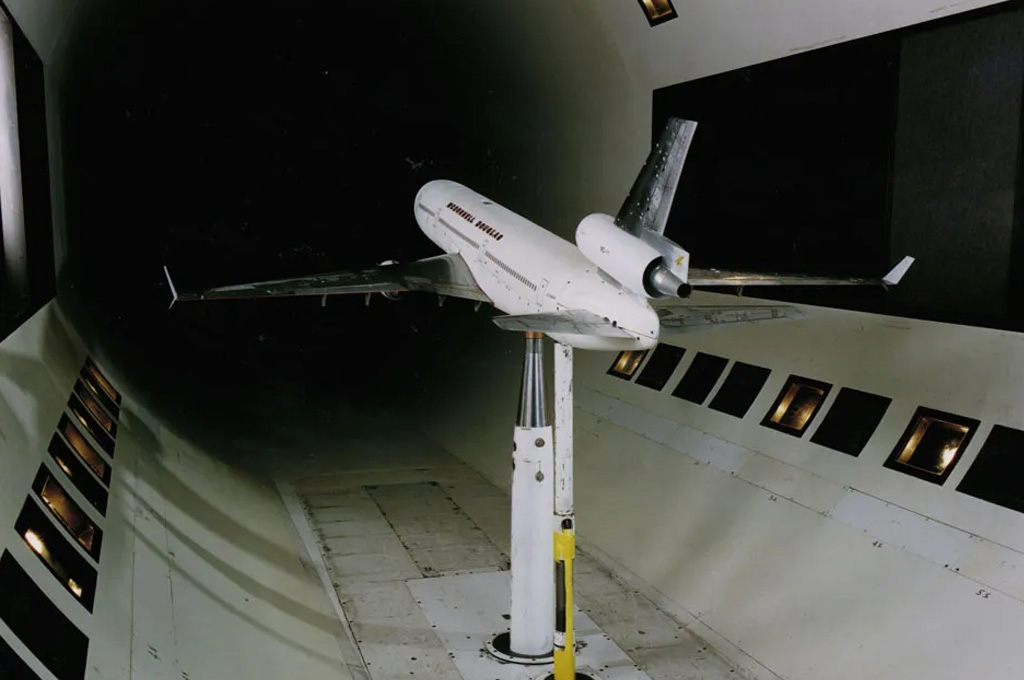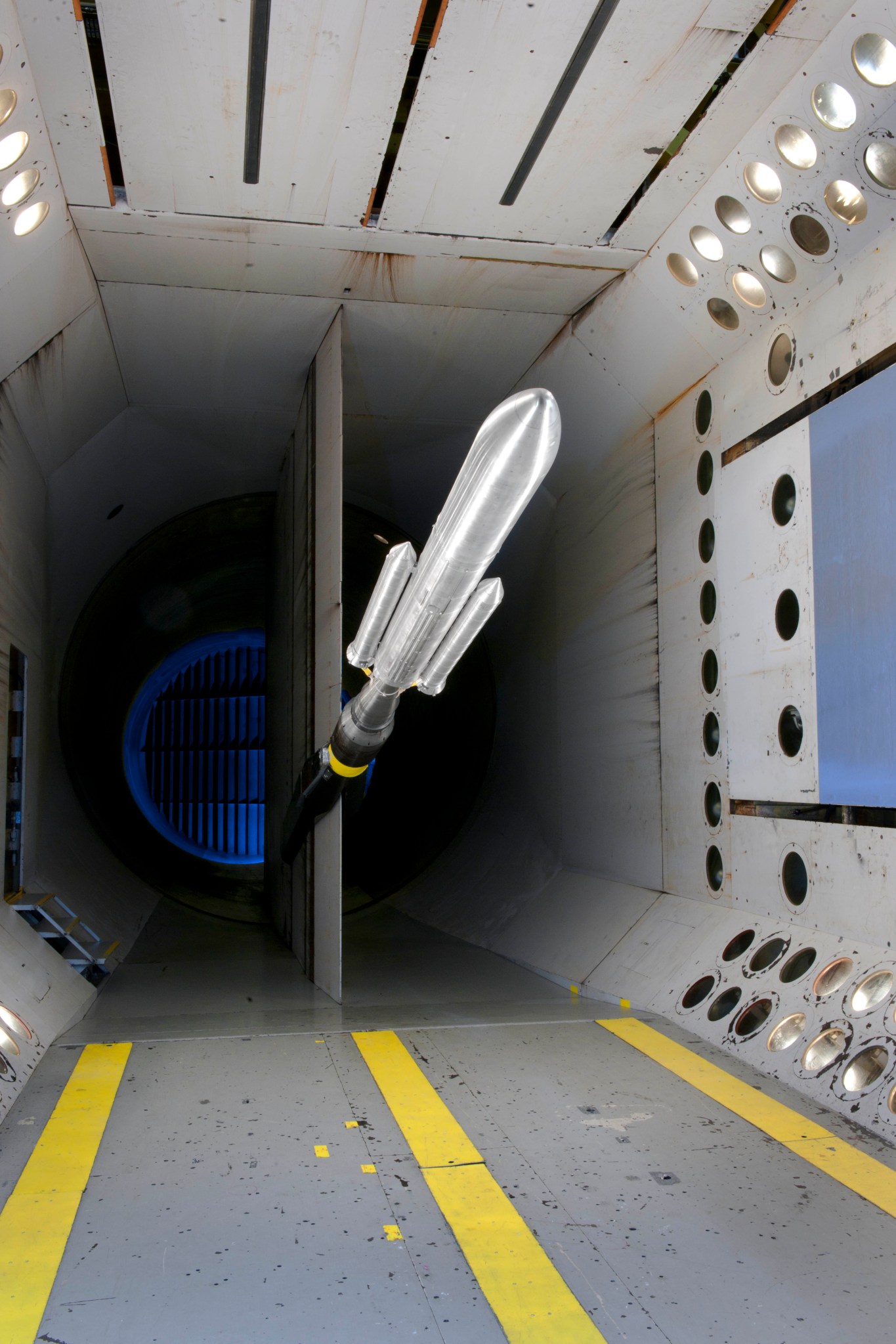This article is for students grades 5-8.
Wind tunnels are tube-shaped facilities that allow engineers to move air over a vehicle as if it were flying. They help researchers to learn more about how an aircraft will fly. NASA uses wind tunnels to test scale models of aircraft and spacecraft. Some wind tunnels are big enough to hold full-size versions of vehicles. By moving air around an object, the wind tunnel simulates the conditions of the object in flight.
How Do Wind Tunnels Work?
Wind tunnels usually have powerful fans to move the air through the tube. The object being tested is placed in the tunnel so that it will not move. The air moving around the still object shows what would happen if the object were moving through the air. The object can be a smaller-scale model of a vehicle, one piece of a vehicle, a full-size aircraft or spacecraft, or even a common object like a tennis ball. Usually, the object carries special instruments to measure the forces produced by the air on the object. Engineers also study how the air moves around the object by injecting smoke or dye into the tunnel and photographing its motion around the object. Improving the flow of air around an object can increase its lift and decrease its drag.
How Does NASA Use Wind Tunnels for Aircraft?
NASA has more wind tunnels than any other organization and uses them for a wide variety of purposes. Since one of its missions is to improve air transportation, NASA uses wind tunnels to learn more about airplanes and aerodynamics to make aircraft better and safer. Engineers can test new designs for aircraft, new materials, new shapes for airplane parts and even how to keep ice from forming on wings. Then, before flying a new airplane, NASA uses wind tunnel tests to make sure it will fly like it should.
NASA also works with others that need to use wind tunnels. That way, companies that are building new airplanes can also test how they will fly. By letting these companies use the wind tunnels, NASA helps to make air travel safer.
How Can Wind Tunnels Help Spacecraft?
NASA also uses wind tunnels to test spacecraft and rockets. Even though these vehicles are designed to operate in space where there is no atmosphere, they must travel through the atmosphere to get there. Vehicles that carry humans into space also must come back through the atmosphere during re-entry.
Wind tunnels play an important part in the development of the new Space Launch System (SLS) rockets and Orion spacecraft. NASA engineers test ideas for SLS design in wind tunnels to see how well the rockets fly. They test Orion models to learn how different designs behave when coming back through Earth’s atmosphere.
Wind tunnels can even help engineers design spacecraft to work on other worlds. Since Mars has a thin atmosphere of carbon dioxide, it is important to know how that atmosphere will affect vehicles that are landing on the surface. Spacecraft designs and parachutes are tested in wind tunnels set up to simulate the Martian atmosphere.
What Types of Wind Tunnels Does NASA Use?
NASA has many different types of wind tunnels located at NASA centers nationwide. The wind tunnels are different sizes, from those only a few inches wide to those large enough to test a full-size airplane. Wind tunnels move air at different speeds. Some are best for testing objects at less than 200 miles per hour. Others move air at more than five times the speed of sound (about 4,000 mph).
Many wind tunnels use fans to speed up the air. In a closed-loop wind tunnel, the air is brought back to the fan and is recirculated continuously through the tunnel. This allows for long test times. Other wind tunnels release pressurized air at very high speeds for short test times. In some wind tunnels, jet engines or rockets can be operated. In others, models are held in place by magnetic fields so they don’t have to be mounted on stands that would interfere with airflow.
Did You Know?
The world’s largest wind tunnel is at NASA’s Ames Research Center in Moffett Field, California.
More About Wind Tunnels
Video: Wind Tunnel Test of NASA’s Most Powerful Rocket (360° Animation)
Video: Our World: Wind Tunnels in Action
Video: NASA Tests Boeing Aircraft Tail in World’s Largest Wind Tunnel
SLS Wind Tunnel Testing
What Is Aerodynamics?





























